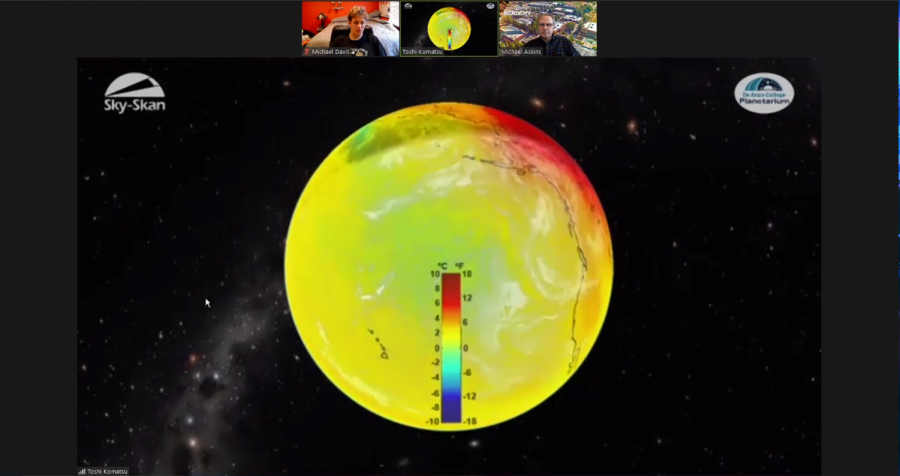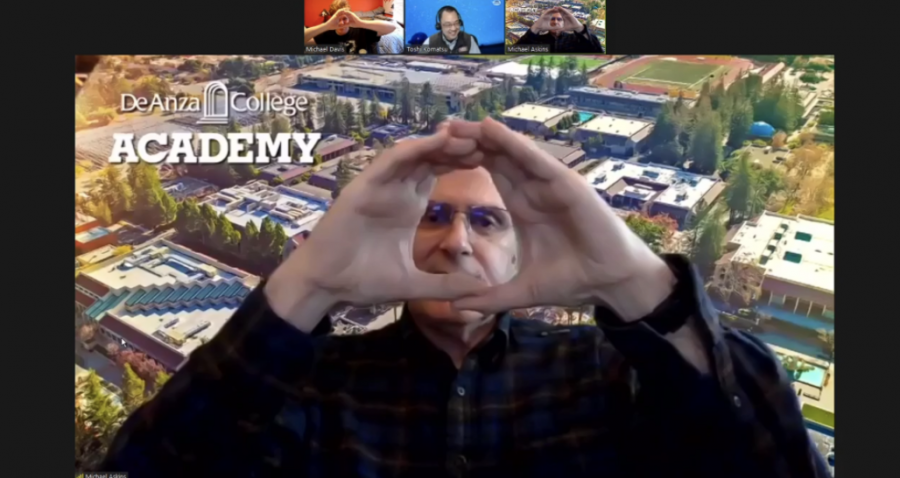Galaxies on a screen: De Anza College planetarium educates students through Zoom tours
Toshi Komatsu using Sky-Skan to show the temperature of the atmosphere from 1870 to a projected 2200.
Although COVID-19 forced the closing of the De Anza College planetarium, astronomers Toshi Komatsu and Michael Askins have developed virtu
al tours for students from kindergarten to eighth grade.
Komatsu, the planetarium director, knew they could not show their usual well-produced film across the dome on Zoom. So, he developed six new programs, sectioning subjects by age group.
This included a show on constellations and moon phases for younger students and one on climate change for older students.
“In creating the six different titles, I started by looking at the NGSS, the Next Generation Science Standards, and seeing what students are supposed to know at different ages,” Komatsu said. “I group them that way.”
There were also worries about student engagement, as students sit in front of a screen instead of gazing at a world of stars.
“In the theater, there’s much more of a sense of excitement with the students,” said Askins, co-presenter on the tour. “But [now] we don’t have that cool ‘Oh, my gosh, what is that big, cool projector thing in the middle of the room?’”
But to Komatsu and Askins’ surprise, Zoom could be more interactive than the theater. Virtual sessions allowed them to banter with each other, see the students’ names and ask more questions to keep the students involved.
“There’s a lot of interactive things that we’ve been able to do with the Zoom meetings,” Askins said. “When we go back to face to face, I think there’s pressure, certainly internal pressure, for Toshi and I to pull some of that stuff into our live shows.”
For the younger audiences, they also encourage participation by having students show what they know in activities like drawing moon phases or showing them with their hands.
“After they’ve drawn a picture of the crescent moon, we ask them to hold it up to the camera to show us what they’ve done,” said Askins. “So in that
way, we can see that they’re getting what the shape is.”
Komatsu said the feedback has been positive; the planetarium has had over 60 bookings.
“In general, astronomy can be a little bit intimidating for people who don’t have that background,” Komatsu said. “So we like to think of ourselves as a service of ‘you don’t have to be an expert on moon phases, black holes and other phenomena. We are here to be these experts for you.’”
Komatsu and Askins are still looking to find new ways of improving their content for future programs.
“We are not doing the volume we normally would, but the volume of programs we have had has been gratifying,” Komatsu said. “We’re appreciative of teachers doing this and still being able to share astronomy with students under these trying conditions.”





